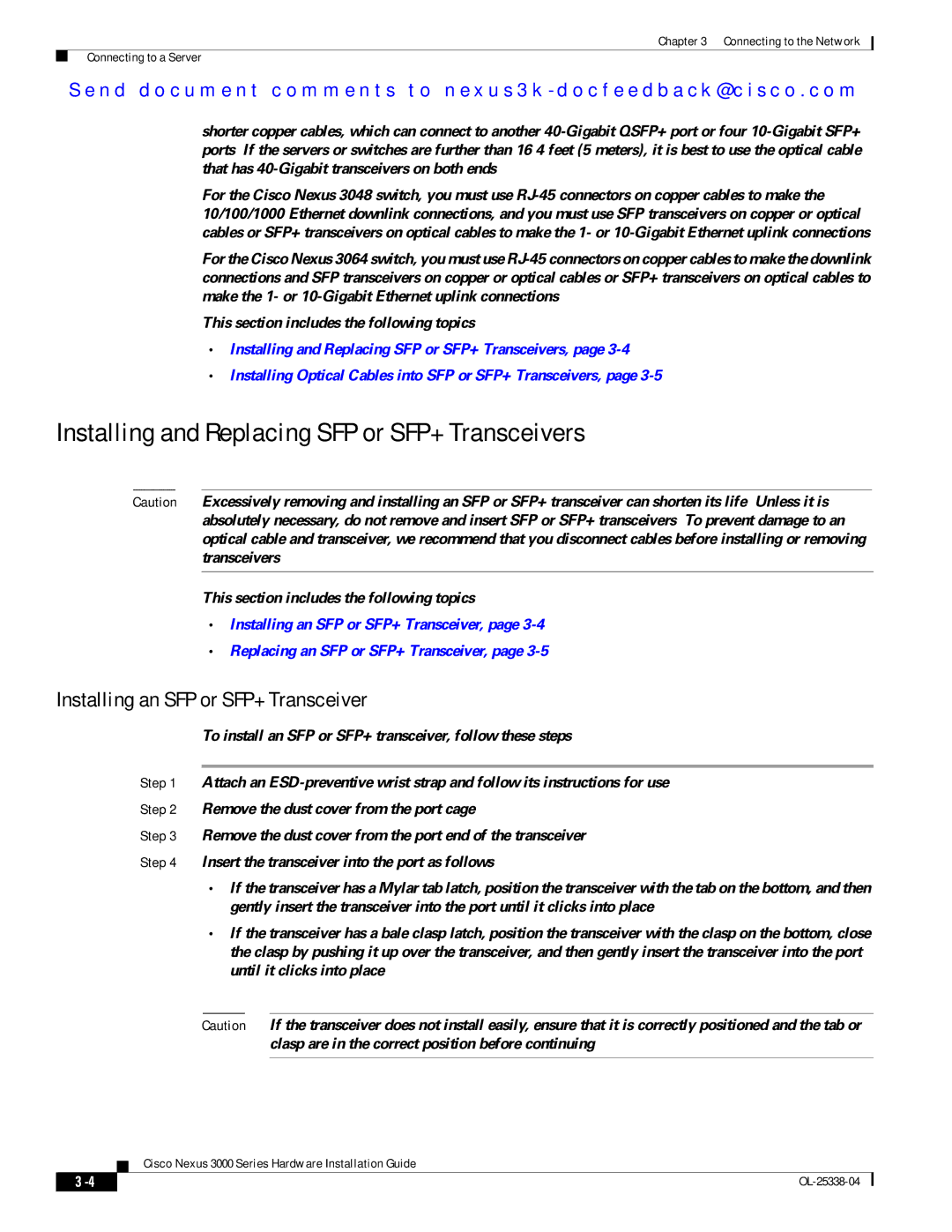
Chapter 3 Connecting to the Network
Connecting to a Server
Se n d d o c u m e n t c o m m e n t s t o n ex u s 3 k - d o c f e e d b a ck @ c i sc o . c o m
shorter copper cables, which can connect to another
For the Cisco Nexus 3048 switch, you must use
For the Cisco Nexus 3064 switch, you must use
This section includes the following topics:
•Installing and Replacing SFP or SFP+ Transceivers, page
•Installing Optical Cables into SFP or SFP+ Transceivers, page
Installing and Replacing SFP or SFP+ Transceivers
Caution Excessively removing and installing an SFP or SFP+ transceiver can shorten its life. Unless it is absolutely necessary, do not remove and insert SFP or SFP+ transceivers. To prevent damage to an optical cable and transceiver, we recommend that you disconnect cables before installing or removing transceivers.
This section includes the following topics:
•Installing an SFP or SFP+ Transceiver, page
•Replacing an SFP or SFP+ Transceiver, page
Installing an SFP or SFP+ Transceiver
To install an SFP or SFP+ transceiver, follow these steps:
Step 1 Attach an
Step 2 Remove the dust cover from the port cage.
Step 3 Remove the dust cover from the port end of the transceiver.
Step 4 Insert the transceiver into the port as follows:
•If the transceiver has a Mylar tab latch, position the transceiver with the tab on the bottom, and then gently insert the transceiver into the port until it clicks into place.
•If the transceiver has a bale clasp latch, position the transceiver with the clasp on the bottom, close the clasp by pushing it up over the transceiver, and then gently insert the transceiver into the port until it clicks into place.
Caution If the transceiver does not install easily, ensure that it is correctly positioned and the tab or clasp are in the correct position before continuing.
Cisco Nexus 3000 Series Hardware Installation Guide
| ||
|
